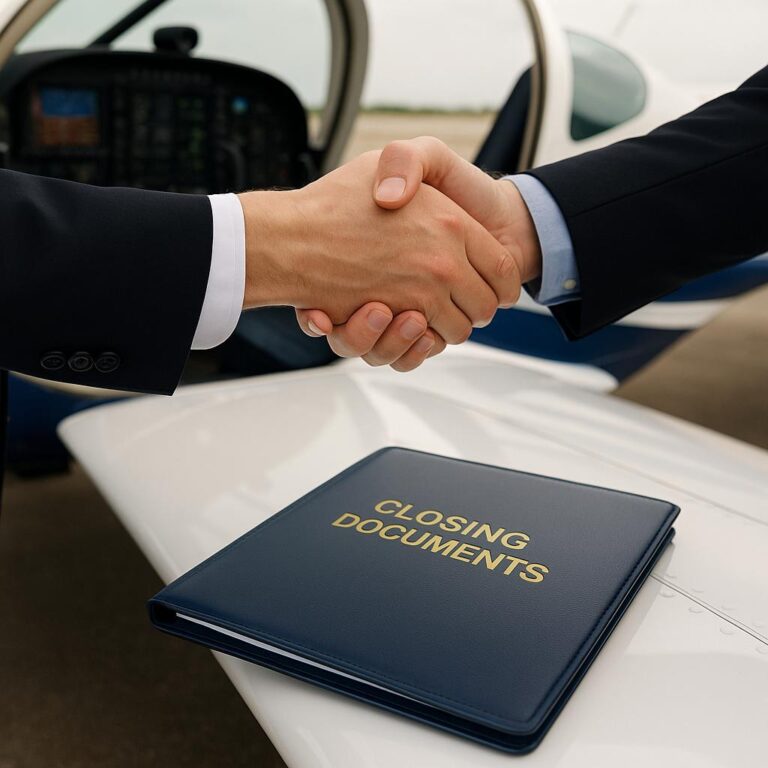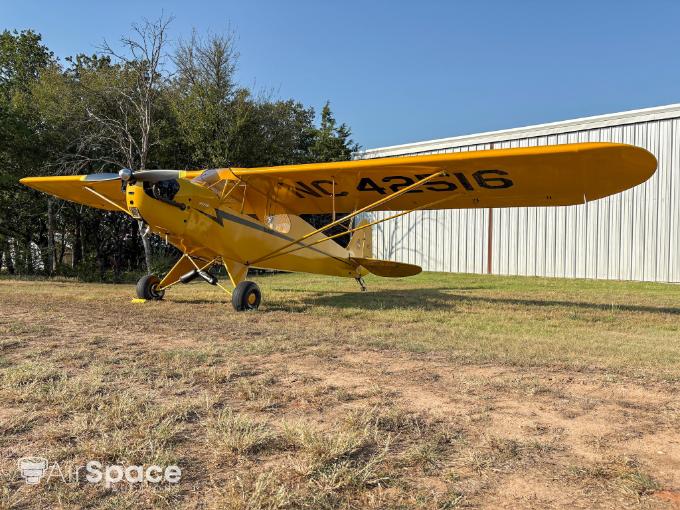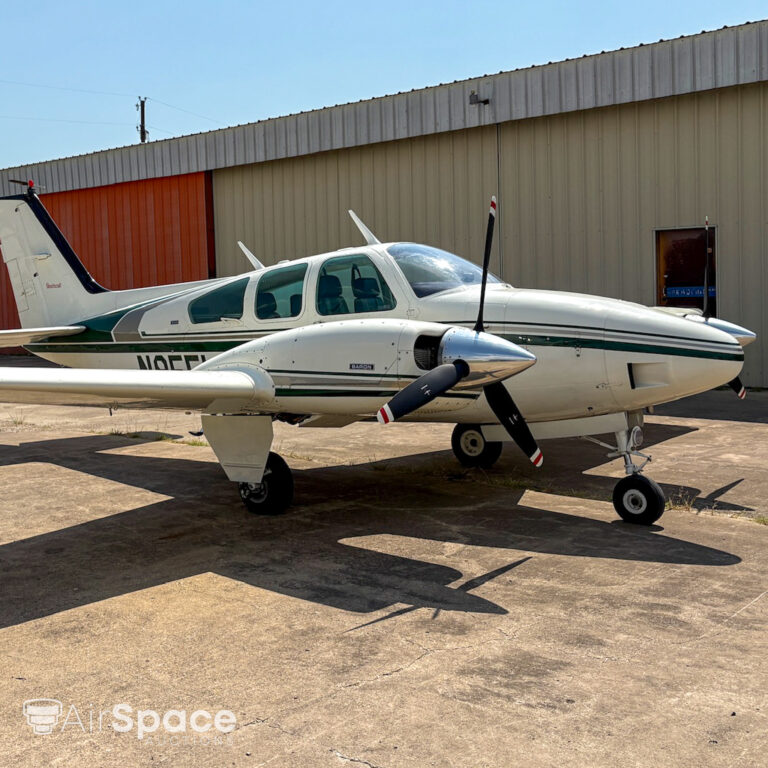The 1968 Cessna 310P: A Comprehensive Overview
The 1968 Cessna 310P, Registration Number N5768M, stands as a testament to Cessna’s long-standing reputation for creating reliable, high-performance aircraft. Known for its elegant design, robust engineering, and exceptional flying capabilities, the 310P model has been a favorite among pilots for decades. This blog post delves into the history of Cessna, the specifics of the 310P model, and highlights its notable features, including the new paint and new glass, which enhance its value and performance. We will also provide detailed information about its airframe, engines, propellers, avionics, exterior, interior, and additional features. Finally, we’ll offer insights into the upcoming auction for this particular aircraft, an opportunity for aviation enthusiasts and professionals alike.
Every 310 shopper has their favorite rendition of the 310. With each model different features were added or removed and the proportions were shifted. The P saw a shorter nose but still has the great classic look of the 310, some have said the Lear Jet with props!
Cessna: A Legacy of Innovation
The History of Cessna
Founded in 1927 by Clyde Cessna and Victor Roos, the Cessna Aircraft Company has been at the forefront of aviation innovation. Clyde Cessna, a farmer with a passion for flying, built his first airplane in 1911. His relentless pursuit of improving aircraft design and performance led to the establishment of Cessna Aircraft. The company quickly gained a reputation for producing versatile, reliable, and high-quality aircraft, serving both civil and military markets.
Cessna’s breakthrough came with the introduction of the Cessna 120 and 140 models in the post-World War II era. These aircraft were affordable, easy to fly, and became immensely popular among private pilots. Over the decades, Cessna continued to innovate, producing iconic models like the Cessna 172, the most produced aircraft in history, and the Cessna Citation series, renowned for their performance in the business jet market.

The Cessna 310 Series
The Cessna 310, introduced in 1954, was the company’s first twin-engine aircraft. It quickly gained popularity for its speed, range, and overall performance. The aircraft’s design featured a low-wing, retractable landing gear, and twin Continental engines, making it a versatile choice for both business and personal use. The 310 series saw numerous upgrades over the years, with improvements in engine power, avionics, and passenger comfort.
New Paint and New Glass
The new paint and new glass on the 1968 Cessna 310P significantly enhance its overall appeal and functionality. The fresh paint job not only provides a striking visual upgrade but also offers superior protection against corrosion and environmental factors, ensuring the aircraft’s longevity. Similarly, the new glass improves visibility and safety, offering clear and unobstructed views for both pilots and passengers. These upgrades reflect a commitment to maintaining the aircraft in pristine condition, combining aesthetic enhancements with practical benefits.

Airframe
The airframe of the 1968 Cessna 310P, with Serial Number 1310P-0068, showcases Cessna’s dedication to robust and reliable aircraft construction. With a total time (TT) of 4600 hours, this airframe has been carefully maintained to ensure continued airworthiness. The low-wing configuration provides excellent stability and control, while the retractable landing gear enhances aerodynamic efficiency by reducing drag. This combination of features makes the Cessna 310P a versatile and reliable aircraft suitable for various flight missions.

Propeller
The propeller system on the 1968 Cessna 310P consists of two Hartzell propellers, renowned for their durability and performance. Both the right and left propellers are Model PHC-C3YF-2VF/FC7663D-2R, with serial numbers EB4653A and EB4734A, respectively. These propellers have Hobbs times of 2980 hours and Tach times of 1385 hours, reflecting their reliability and consistent performance. The Hartzell propellers contribute to the aircraft’s overall efficiency and smooth operation, ensuring a safe and reliable flight experience.

Engine
Powering the 1968 Cessna 310P are two Continental IO470V engines, known for their robustness and efficiency. The right engine, with Serial Number 170264-70-V-R, and the left engine, with Serial Number 170056-8-V-R, both have 175 hours since all cylinders were replaced and 1425 hours since major overhaul (SMOH). The engines boast impressive compression ratios, ensuring optimal performance and longevity. These engines provide the Cessna 310P with the power and reliability needed for safe and efficient operation.
Avionics
The avionics suite of the 1968 Cessna 310P is a comprehensive blend of advanced technology and user-friendly interfaces. It includes a 3M WX10A weather radar, EDM 750 engine analyzer, STEC 50 autopilot coupled to Garmin 530, yaw dampener, and a PS engineering CD player. Additionally, the aircraft is equipped with a Garmin GNS 430 WAAS, Garmin transponder with ADSB out, King KX 155 TSO Nav Comm, and numerous other essential instruments. This avionics package enhances the safety, navigation, and overall flight experience, making it suitable for various flight conditions.

Exterior
The exterior of the 1968 Cessna 310P has been meticulously refurbished with new paint. The aircraft now features an all-white top, blue bottom, and striking red and grey accent striping. This fresh paint not only enhances the aesthetic appeal of the aircraft but also provides added protection against environmental elements, ensuring longevity and durability. The new paint job makes the aircraft stand out, reflecting both elegance and sophistication.
Interior
The interior of the 1968 Cessna 310P has been completely renovated to provide maximum comfort and style. It features new blue leather seats with plush covers for the front seats, a white ceiling, blue carpet, and blue paneling. This luxurious and comfortable interior can accommodate up to six passengers, offering a pleasant and relaxing flying experience. The attention to detail in the interior refurbishment underscores the aircraft’s quality and the owner’s commitment to maintaining it in top condition.
Additional Features
The 1968 Cessna 310P comes with several additional features that enhance its value and functionality. These include window covers with heat shields, a battery tender, and frequently applied Corrosion X for added protection. The aircraft also has recovered 5th and 6th seats, which are not currently installed. These features ensure the aircraft remains in top condition, providing a safe and enjoyable flying experience while also offering flexibility for various passenger configurations.

Upcoming Auction
The 1968 Cessna 310P, Registration Number N5768M, is set to be auctioned, presenting a unique opportunity for aviation enthusiasts and professionals to acquire a meticulously maintained and high-performing aircraft. The auction will start on August 7, 2024, and end on August 14, 2024, at 12:00 pm. The required deposit for participating in the auction is $3,000, with a buyer’s premium of 6%. The auction will take place in Redding, CA, and the aircraft, which seats six, promises to be an excellent addition to any fleet. This well-cared-for Cessna 310P, with its fresh paint and interior, is a rare find on the market, offering comfort, safety, and performance for its new owner.
Conclusion
The 1968 Cessna 310P is a prime example of Cessna’s commitment to quality, performance, and innovation. With its rich history, powerful engines, advanced avionics, and luxurious interior, this aircraft offers a perfect balance of value and performance. The new paint and new glass enhance its aesthetics and durability, making it an excellent investment for any aviation enthusiast. The upcoming auction provides a rare opportunity to acquire this meticulously maintained aircraft, ensuring many more years of safe and enjoyable flying.
Whether you are a seasoned pilot or a prospective buyer, the 1968 Cessna 310P is an aircraft that promises reliability, comfort, and exceptional performance. Don’t miss the chance to own this outstanding example of Cessna’s engineering excellence.




















